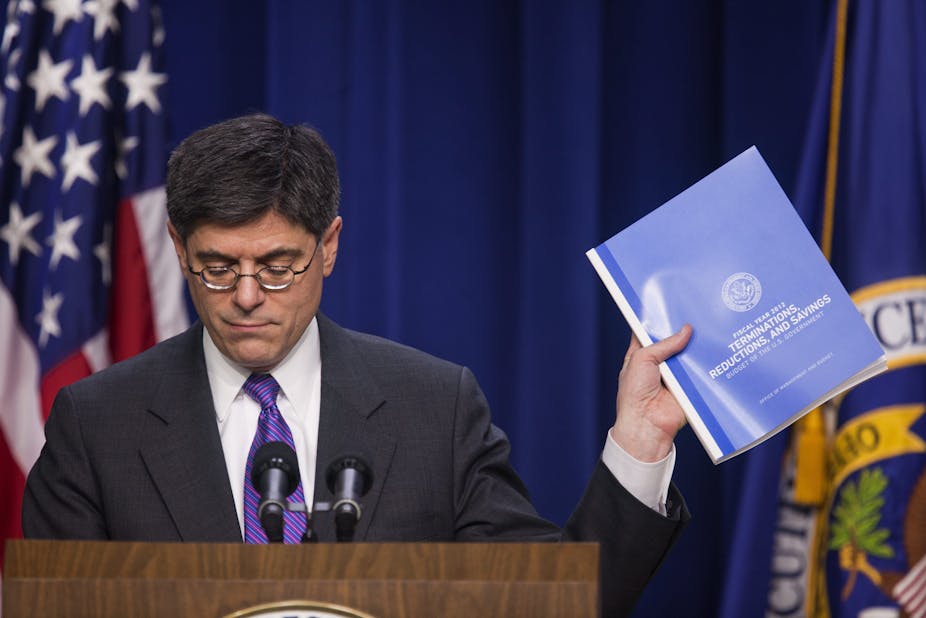Financial markets must be confident that the US will not default on its sovereign debt, otherwise those markets would have plummeted by now. But is that confidence justified?
Markets participants are comforted by two ways of avoiding the calamity of a US sovereign default.
The first level of containment is political. Each passing day will bring more pressure on Washington for a political solution. Political pressure from outside the Beltway forced resolution of previous debt ceiling stand-offs, most notably in 2011.
But positions are more entrenched this time. Both the White House and the Republican leadership in the House have made firm commitments to their supporters that they will not compromise – it won’t be easy to climb down from those positions.
The Congressional Budget Office says that if there is no increase in the debt ceiling above its current level of $16.7 trillion then, sometime between the 22nd of October and 5th of November, the US Government will no longer be able to meet all of its financial obligations.
Let’s consider the figures. This year the US Government will spend about $4 trillion and have receipts of about $3.3 trillion for a projected deficit of $650 billion. That is, spending is expected to exceed receipts by between $50 and $60 billion per month.
Ordinarily the Treasury would issue new debt to cover that difference. Without the ability to raise new debt some of these obligations will go unpaid.
But the markets have confidence in the second level of containment –- the ability of the Treasury to prioritise payments. If there is no political solution then sometime in mid-October the US Treasury will have to start to prioritise payments.
The highest priority will go to the payment of interest on debt. About $7 billion per day will flow into the Treasury in the form of income tax and payroll tax payments. That will easily cover the interest payments on US Treasury debt which is ‘only’ about $35 billion per month. Any debt that matures can be rolled over without breaching the debt ceiling.
Other payments – to military personnel, social security and medicare recipients, and many others – will be given a lower priority. The Treasury has not stated that it will prioritise payments in this way.
There is a legal question on whether the Treasury can undertake this prioritisation. And there are the ethical questions about whether financial market claimants should be ahead of ordinary families dependent on Federal Government payments to live.
But legal and ethical questions pale compared to the spectre of the global economic calamity that would follow an actual default on US Treasury bills, notes or bonds.
Financial markets are not very concerned about legal or ethical challenges to prioritisation of payments by the Treasury. The markets are concerned about something else – the technical challenge.
The Treasury has pointed out that its computer systems process over 100 million cheques per month and those systems are not set up to prioritise payments. They are set up to make every payment in sequence as it becomes due.
Skeptics will say Treasury reports to the Obama Administration and therefore the Treasury will overstate the technical problems with prioritisation to please its political masters in the Whitehouse.
But a report compiled by the Treasury in 2011 – and published after the debt ceiling crisis in that year – emphasised the technical challenges of printing cheques out of order and concluded that it could not be easily done.
The markets seem to be focusing on the good news about prioritisation. The payment of cheques by the Treasury is made by three separate systems – one for defence related payments, one for payments to Treasury debtholders and one for all other payments.
Optimists – which, for now, is most of the markets – expect that debt payments system will be operated separately and with priority to the other systems. The other systems will make payments (social security, medicare, military wages, etc) on a day by day basis.
As soon as enough cash has accumulated (after the prioritised debt payments) for a whole day of payments then all of those payments for a particular day will be made. The US Government will then get successively further and further behind in its non-debt obligations on a whole day basis.
The US can go on indefinitely without a sovereign debt default so long as it can prioritise payments of interest on Treasury debt above all other obligations.
The markets in this developing crisis have held up because they are confident the Treasury can solve the technical problems associated with prioritisation.
This is a dangerous assumption, but it reflects a confidence in American technical prowess rather than confidence in the American political system.

